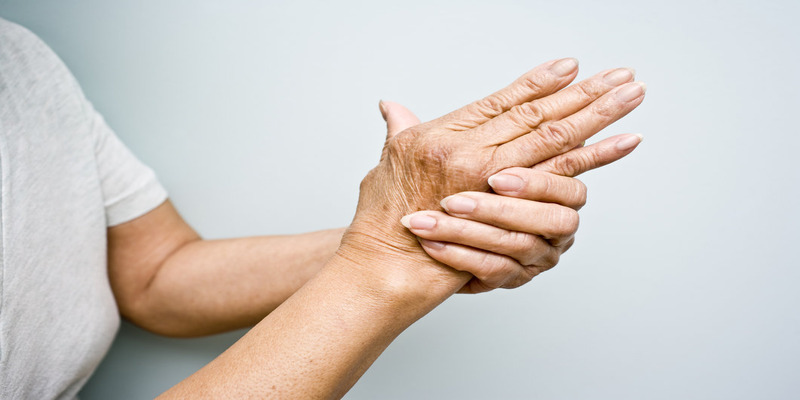Trigger finger is commonly referred to as Stenosing Tenosynovitis, and it is a condition that is characterized by tendon inflammation on the fingers or thumb and shows signs like stiffness, pain, and clicking.
It can subsequently lead to the finger that is affected remaining fixed in a particular position, curled up, and then straightening abruptly pulling a trigger-like action.
Usually resulting from overuse of the hand or other health conditions, the Trigger Finger may affect ones ability to carry on daily activities.
Plus, it is a painful condition that is curable through anti-inflammatory medicine, removal of pressure from the affected, and, in severe cases, surgery.
So, it is vital that the condition is diagnosed early and that proper management is undertaken. Lets discover more about what is Trigger Finger: symptoms, causes, diagnosis, and treatment!
What is Trigger Finger?

The Trigger Finger basically begins as an inflammation of the tendons that allow your fingers to flex, resulting in finger tenderness and pain. And eventually, it restricts your finger's movement and makes flexing and extending the finger hard.
Common Early Symptoms
- An arthritic sensation in the back of your thumb or another finger that sticks around for a while
- A small swelling or a nodular enlargement around the root of your finger close to your palm.
- Softness near the bottom of your finger
- A snapping sound with motion
- Stiffness in your finger
If you do not seek treatment, the finger, known as the Trigger Finger, can change for the worse in this position. Further progress appears in the form of a lock that affects the thumb, another finger, or both, either bent or straight.
Advanced cases of this condition may also see you being unable to uncurl your finger without using the other hand.
If one has this disease, it is expected to experience stiffness, especially in the morning. The finger usually becomes less stiff or less rigid during the day and more flexible in movements.
What Causes Trigger Finger?

Each of your fingers has several small bones that form your finger. This connection is made between bones and muscles through tendons.
When your muscles feel complex or tense, your tendons slip your fingers on the bones to which they are connected.
There are long tendons in your forearm called the flexor tendons; these have to connect with the muscles and bones in your hands. Flexor tendons pass through a canal referred to as the flexor tendon sheath.
Whenever the tunnel is constricted, your tendon cannot travel to get a position of work as it was supposed to, and vice versa. It gets stuck.
When the tendon moves in the space confined by the sheath, it fights against the sheath, and in so doing, it inflames and thus becomes swollen.
Motion becomes extremely difficult. Pain can also cause the development of a bump on the joint surface, thereby limiting movement.
Effective Ways To Diagnose Trigger Finger
A doctor can diagnose this condition, known as the Trigger Finger, by conducting a physical examination and even asking a few questions about your general health.
Your doctor will look for characteristic clicks on the motion of the joint. They will want to find a bent finger. The two may watch you operate your hand when opening and closing it.
Diagnostic tests for myasthenia gravis generally will not entail taking X-rays, different kinds of scans, or other imaging techniques.
Make sure that you get all these tests done whenever you notice the signs and symptoms of this condition. The earlier you diagnose it, the easier it will be to treat the condition!
Management Of The Trigger Finger? Treatment Measures

At-Home Treatments
This is in light of treatment that differs from mild to severe symptoms in affected patients. At-home treatments include:
- Tapering, that is, reducing the amount of time a worker spends on repetitive operations to four to six weeks in a day.
- Wearing a brace or splint to immobilize the hand and letting the affected part have some rest.
- These include warming the hand by immersing the hand in warm water several times a day to help relax the tendons and muscles.
- Flexing the fingers to improve their range of movement enhances dexterity.
Medications
The medicine may help ease inflammation. Anti-inflammatory medications include:
Surgery
If other methods of treatment, such as vitamins and home remedies, do not relieve your condition, your doctor will need to consider surgery. Orthopedic surgeons can treat the condition with outpatient surgery.
When you are given an anesthesia shot, your surgeon makes an incision on the palm and then releases the cut tendon sheath.
Take, for example, the case where the tendon sheath has been injured; the area is loose after it has healed, enabling the finger to move adequately. Surgery risks consist of risks of infection or the failure of surgery results.
You should be able to get back to your other activities within the next few days. Most stitches will be removed by your doctor in 7 to 14 days.
Conclusion
Trigger finger is a relatively frequent kind of pathology that affects fingers. Most patients, especially the ones diagnosed early and receiving proper treatment, find immense relief and return to normal activities.
Some of the symptoms mean that one should consult a doctor. Include a lock of fingers, snapping moments, and pain. Proper treatment can help the patient regain the use of his fingers and avoid possible long-term effects.
We hope this guide on What is Trigger Finger: symptoms, causes, diagnosis, and treatment clears all your doubts and concerns.







